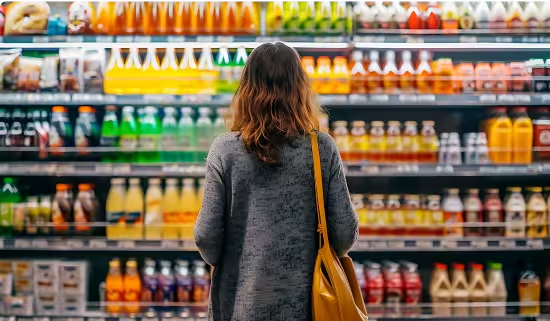
China Organic Food Market Outlook to 2020 - Rising Food Safety Concerns and Urban Population to Prosper Market Growth
Region:Asia
Product Code:KR397
May 2016
142
About the Report
The report titled "China Organic Food Market Outlook to 2020 - Rising Food Safety Concerns and Urban Population to Prosper Market Growth" which provides a comprehensive analysis of the organic food market in China. The report covers various aspects such as overall size of China organic food market, segmentation on the basis of source of procurement, urban and rural demand, different organic food types, distribution channels and major cities. The report also covers the trade scenario in the market, organic certification process in details and Government's role and regulations in the industry. This report also offers prevalent trends and developments in industry, Porter's 5 Forces analysis and challenges in the industry. The report also covers the competitive landscape of the industry, in which the information related to the players operating in this industry has been comprehensively presented. Moreover, the report also captures the online market for organic food and offers information regarding the business models operating in the segment. Major macroeconomic indicators affecting the market have also been highlighted in the report. The report is useful for existing organic food manufacturers and processors, importers and exporters of organic food, consultants, small and big retailers including online companies operating in the market.
China Organic Food Market
Owing to increasing food safety concerns and rapidly emerging middle class population, the market for organic food in China has seen a decent growth over the period 2010-2015. China has currently become the world's fourth-biggest consumer of organic food. Also, globally China had the fourth largest area for organic agriculture in 2014. The organic agricultural land in China stood at ~ million hectares in 2014. The organic food market size in China has grown at a CAGR of ~% over the period 2010-2015 and has been estimated at USD ~ billion in 2015. In terms of number of organic products, the market has come a long way from having ~ varieties in 2010 to ~ in 2015.
Consumption of organic food items has also matured at a fair rate to account for approximately ~% of the overall food consumption in 2015 from that of ~% back in 2010. The market has a huge potential in the sense that the industry still fails to meet 30% of the domestic demand. The trade scenario in the market has been quite upbeat, except the hit back in exports during the period 2012-2014. The export market for organic food in China grew at a decent CAGR of ¬% over the period 2010-2015 has registered revenues worth USD ¬ billion in 2015. The import market, though currently very small in size, registered a high CAGR of ¬% over the period 2010-2015 and was valued at USD ¬ million in 2015.
Regions such as United States, Australia and European Union have been the major import sources for China. The competitive scenario in the market is quite fragmented with presence of as many as ~ companies engaged in organic food and beverage production. There are only a handful of small companies who have their businesses totally dedicated to organic production and processing. The market is characterized by larger firms engaged in production and supply of some special organic food products. Therefore, even the largest of the players have a maximum of around ~% of the market share. For example, two large organic dairy companies- Yili and Mengniu together accounted for only ~% of the overall organic sales value in 2015. The market is expected to see some major consolidations as larger players expand their organic product offerings and bind the stake holders in the existing distribution system.
The consumer segment in the market is dominated by the urban population as the major target group. As far as distribution channels are concerned, supermarkets and hypermarkets have been resulting for around ~% of the organic food sales in the country. However, the online stores have garnered a fair share over the years to become one of the prominent channels for organic food procurement. In the segmentation by different food types, vegetable items stood as the most common organic food purchased by the Chinese population with ~% market share. Vegetable sales were followed by grain, tea and fruit as major selling items. Rice and pulses were highest contributing segments within grains with share worth ~%, ~% and ~% respectively in terms of market revenues in 2015, while green tea and oolong tea were the major categories within organic tea
China Online Organic Food Market
The online market for organic food in China is still at a nascent stage but the exponentially growing e-commerce in China has incentivized many organic retailers to venture into the online segment. Online players like Fields China, Tony's Farm and Epermarket has heavily supported the percolation of organic trend in the mainland. A majority of the online organic retailers follow a subscription based model wherein they have various institutions like schools, hospitals and corporate houses subscribe to their portals and receive daily or weekly or monthly deliveries of food boxes. The charges vary depending on the delivery frequency. The online organic food market is expected to grow to USD ~ billion by 2020 at a formidable CAGR of ~% over the period 2015-2020.
Key Topics Covered in the Report:
- The Market Size of China Organic Food Market.
- Value chain analysis of China Organic Food Market.
- Growth Drivers and Challenges in China Organic Food Market.
- Specialty Shops for Organic Products in China.
- Consumer Profiles in China Organic Food Market.
- Market Segmentation by Source of Procurement, Urban and Rural Demand, Distribution Channels, Types of Organic Food.
- Profiles of Major Players in China Organic Food Market.
- Government Role and Regulations in China Organic Food Market.
- Trade Scenario in China Organic Food Market.
- Certification Process in China Organic Food Market.
- Future Projections for China Organic Food Market.
- The Market Size of China Online Organic Food Market.
- Market segmentation of China Online Organic Food Market on the Basis of Mode of Placing Order and Weekday and Weekend Orders.
- Profiles of Major Players in China Online Organic Food Market.
- Business Model in China Online Organic Food Market
- China Online Organic Food Market Future Projections and Outlook.
- Analyst Recommendations.
Scope of the Report
Products
Companies
Table of Contents
1. Executive Summary
Genesis of Organic Food Market in China
Market Dynamics in the Present Context
Growth Impetus for the Market
Challenges in the Market
Certification Process for Organic Products in China
Consumer Preferences for Organic Food in China
Market Segmentation for Organic Food Products in China
Online Market for Organic Food
Trade Scenario
Positioning of Major Players in Organic Food Market
Government Role and Regulation in the Industry
Future Potential of the Market
Recommendation for the Stakeholders
2. Appendix
2.1. Market Definitions
2.2. Abbreviations
2.3. Market Size and Modeling
Research Methodology
Approach - Market Sizing
Variables (Dependent and Independent)
Multi Factor Based Senstivity Model
Final Conclusion
3. China Organic Food Market Introduction and Size, 2010-2015
4. Value Chain Analysis of China Organic Food Market
4.1. Local Manufacturing Model
4.2. Import Based Model
5. Growth Drivers and Challenges in China Organic Food Market
Increasing Food Safety Concern Leading People towards Organic Food
Rise in Average Household Incomes leading to rise in Demand
Rising Imports Fuel the Market
Mistrust of Domestic Certification
Disruptive Supply Chain because of Alterante High Margin Offerings
High Price Differential Between Conventional and Organic products
High Environmental Pollution in China
6. Trade Scenario of Organic Food in China
6.1. Import of Organic Food
Import Duty Rate for Import of Organc foods
6.2. Export of Organic Food
7. Specialty Shops for Organic Products in China
8. Regulations and Role of Government in China Organic Food Market
9. Organic Food Certification Bodies in China
10. Consumer Profile in China Organic Food Market
11. Porter's Analysis of China Organic Food Market
Rivalry Among Competitors
Bargaining Power of Suppliers
Bargaining Power of buyers
Threat of New Entrants
Threat of Substitutes
12. China Organic Food Market Segmentation
12.1. By Source of Procurement (Domestic and Imports), 2015
12.2. By Rural and Urban Demand, 2015
12.3. By Distribution Channels (Supermarket/Hypermarket, Online, Small Grocery/Retail/Specialty Stores, Community Supported Agriculture (CSA) and Others), 2015
12.4. By Type of Organic Food (Vegetables, Grain, Tea, Fruits, Aquaculture, Livestock, Vegetable Oil, Processed Food and Others), 2015
12.4.1. By Demand from Major Provinces (Shanghai, Beijing, Shenzhen, Guangzhou and Others), 2015
13. Market Share of Major Players in the China Organic Food Market
13.1. Competitive Scenario
13.2. Company Profile of Major Organic Food Manufacturers in China
13.2.1. KangGang Food Development Co. Ltd.
13.2.2. Sino Agro Food Inc.
13.2.3. Inner Mongolia Yili Industrial Group
13.2.4. China Minzhong Food Corporation Limited
13.2.5. Jiangxi Jinyuan Agriculture Development Co. Ltd.
13.2.6. Taian Taishan Asia Food Co. Ltd.
13.2.7. Zhejiang Caiyunjian Tea Co,Ltd
13.2.8. BIOFarm
14. China Online Organic Food Market Introduction and Size
14.1. Business Models Prevalent in China Online Organic Food Market
14.2. China Online Organic Food Market Segmentations
14.2.1. By Mode of Placing Order (Mobile and Desktop), 2015
14.2.2. By Weekday and Weekend Orders
14.3. China Online Organic Food Market Future Outlook and Projections, 2016-2020
14.4. Company Profiles for Major Players in China Online Organic Food Market
14.4.1. Fields China
14.4.2. Tony's Farm
14.4.3. EperMarket
15. China Organic Food Market Future Outlook and Projections, 2016-2020
16. Cause and Effect Relationship Analysis in China Organic Food Market
17. Analyst Recommendation
18. Macro Economic Variables Impacting the China Organic Food Market
18.1. Consumer Expenditure on Food and Beverages, 2010-2020
18.2. Urban Population in China, 2010-2020
18.3. GDP from Agriculture, 2010-2020
18.4. Food Inflation in China, 2010-2020
18.5. High Net-Worth Individuals in China, 2010-2020
Disclaimer
Contact Us
Research Methodology
Why Buy From Us?

What makes us stand out is that our consultants follows Robust, Refine and Result (RRR) methodology. i.e. Robust for clear definitions, approaches and sanity checking, Refine for differentiating respondents facts and opinions and Result for presenting data with story

We have set a benchmark in the industry by offering our clients with syndicated and customized market research reports featuring coverage of entire market as well as meticulous research and analyst insights.

While we don't replace traditional research, we flip the method upside down. Our dual approach of Top Bottom & Bottom Top ensures quality deliverable by not just verifying company fundamentals but also looking at the sector and macroeconomic factors.

With one step in the future, our research team constantly tries to show you the bigger picture. We help with some of the tough questions you may encounter along the way: How is the industry positioned? Best marketing channel? KPI's of competitors? By aligning every element, we help maximize success.

Our report gives you instant access to the answers and sources that other companies might choose to hide. We elaborate each steps of research methodology we have used and showcase you the sample size to earn your trust.

If you need any support, we are here! We pride ourselves on universe strength, data quality, and quick, friendly, and professional service.















